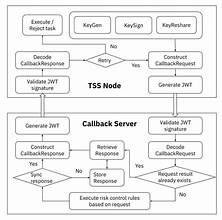Server to Server Callback and it's uses
A server-to-server callback (often called S2S callback or postback) is when one server communicates directly with another server in the background, usually without any client/browser involvement.
It’s widely used in distributed systems, payments, ads, and backend integrations.
🔑 Use Cases of Server-to-Server Callback
Payment Systems
When a user pays via a third-party payment gateway (PayPal, Razorpay, Stripe), the payment provider sends an S2S callback to the merchant’s server confirming the payment status.
Ensures reliability even if the user closes the browser or loses internet after payment.
Ad Tech (Tracking & Attribution)
Ad networks send postbacks to advertisers when an event happens (e.g., app install, purchase).
Example: Facebook Ads → S2S callback → Advertiser backend records conversion.
Authentication & OAuth
After OAuth authorization, the provider can send a callback to your backend confirming user token details or subscription status.
Webhook-like Notifications
Order status updates (e.g., shipping provider → e-commerce platform).
Inventory updates (supplier → retailer).
IoT/Monitoring alerts.
Fraud Prevention & Audit
Ensures there’s a trusted record between two servers (instead of depending on client/browser calls which can be tampered).
⚙️ Why Use S2S Callback Instead of Client-Side?
Reliability: Works even if client disconnects or closes app/browser.
Security: Direct server communication (signed, authenticated), less risk of manipulation.
Scalability: Asynchronous, event-driven communication (can be queued/retried).
Data Consistency: Both systems remain in sync.
Example Flow (Payment)
User → clicks "Pay" → redirected to Payment Gateway.
Payment Gateway → processes payment.
Gateway → sends S2S callback (JSON/HTTP POST) to Merchant Server:
{
"transaction_id": "tx_12345",
"status": "SUCCESS",
"amount": 500,
"currency": "INR"
}
Merchant Server → verifies signature & updates DB.
Merchant Server → shows updated status to user on next page load or via notification.
👉 In short: S2S callbacks are used to notify or synchronize events between systems securely, reliably, and without depending on the client.


